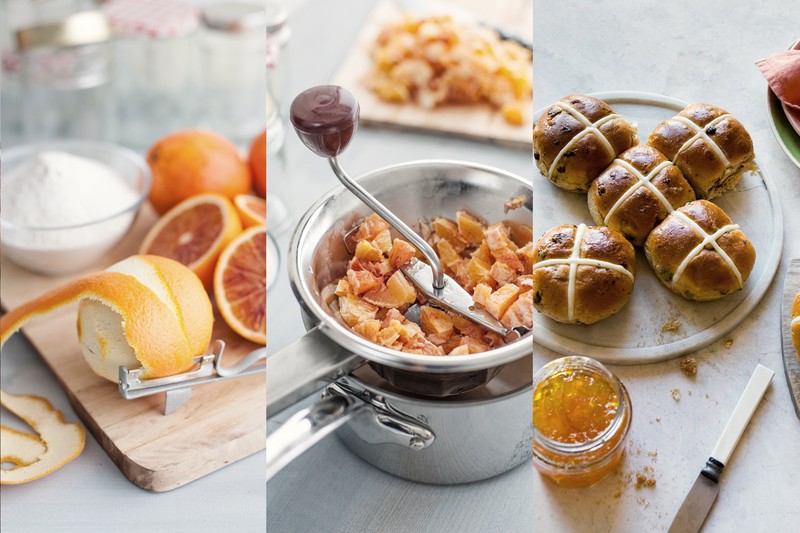
How To Make Marmalade At Home
First up, what are the key ingredients?
One of marmalade’s best qualities is the fact it doesn’t require many ingredients. “All you need is Seville oranges, water, golden granulated sugar and fresh lemon juice,” says Elspeth Biltoft, founder of Rosebud Preserves. Chris Braitch of preserve pros The Cherry Tree suggests including a mixture of white and brown sugars to taste and making sure to include the peel of Seville oranges.
Can you make any substitutions?
Absolutely, says Elspeth: “The most common is a mixture of Seville orange, grapefruit and lemon, or lemon and lime.” She also explains it’s possible to make marmalade from sweet orange, clementine, tangerine, mandarin or blood orange; however be warned that it can be a little trickier to ensure a consistent set, without practice, as these are not as acidic as Seville oranges and contain less naturally occurring pectin. “You can make substitutions,” says Jane Hasell-McCosh, founder of The World’s Original Marmalade Awards. “However, to be classed as a marmalade it must be predominantly citrus,” she explains.
Can you use frozen fruit?
Yes, says Elspeth. “Seville oranges freeze very well and can therefore extend the period for making this wonderful marmalade. Simply wash the fruit, air dry, bag up in prescribed amounts and freeze,” she says. In fact, Jane says it can sometimes be easier to use frozen fruit, as it softens the skin and makes the fruit easier to handle. Chris agrees, but adds: “For optimal colour, flavour and texture, I always go fresh.”
What kitchen equipment do you need?
Here’s Elspeth’s definitive list:
-
Heavy based preserving or standard pan with a large surface area
-
Scales
-
Measuring jug
-
Large sharp knife
-
Chopping board
-
Lemon juicer
-
Wooden spoon
-
Slotted spoon
-
Sugar thermometer
-
Jars (warmed in a low oven)
-
Metal lids
-
Labels
Are there any pitfalls to avoid?
“Dissolve your sugar over a very low heat to avoid crystals forming once the marmalade is set and cold, says Elspeth. “And always jar preserves when they’re hot and use metal lids, rather than cellophane, to ensure a vacuum and help preservation.”
It is important to remember that marmalade making is not a quick process and should not be rushed, says Jane. “Another pitfall to avoid is adding the sugar before the shred has been cooked properly, as the shred should be soft and tender,” she adds. Chris has one final word of caution: “Don’t overboil, or else the marmalade will be very dry.”
What are your favourite flavour combinations?
“Marmalades from Japan have excellent flavour combinations and often includes different fruits such as yuzu,” says Jane. For Elspeth, it’s an easy choice – lemon with stem ginger.
Any final tips?
“I like to use unrefined cane sugar,” says Elspeth. “It gives a lovely and slightly molassed flavour to the finished marmalade. I also like to add 60ml of quality whisky when the setting point is reached to create a special seasonal preserve for Christmas. Remember to test if it’s set again once the whisky is added – and cook on for a moment or two if necessary.” Finally, she has one further piece of advice: make note of the time it takes to cook the fruit, and the total time to reach setting point, to ensure a better marmalade next time.
Meanwhile, Jane says that as long as the tops are screwed tight on the jars, marmalade has a very long shelf life and can keep for many years if stored in a dry, cool place. Chris suggests making sure you cook the peel separately for 1½ hours. “It appears and feels cooked quicker than this, but it’s just trying to trick you – it firms back up once you add the sugar and will be chewy if you fail to adhere to that timing.” He also says sterilising the jars is unnecessary and is “a waste of time, energy and effort”. Instead, he suggests filling the jars with water above 85ºC before using them.
Inspired? Here are a couple of marmalade recipes to try…
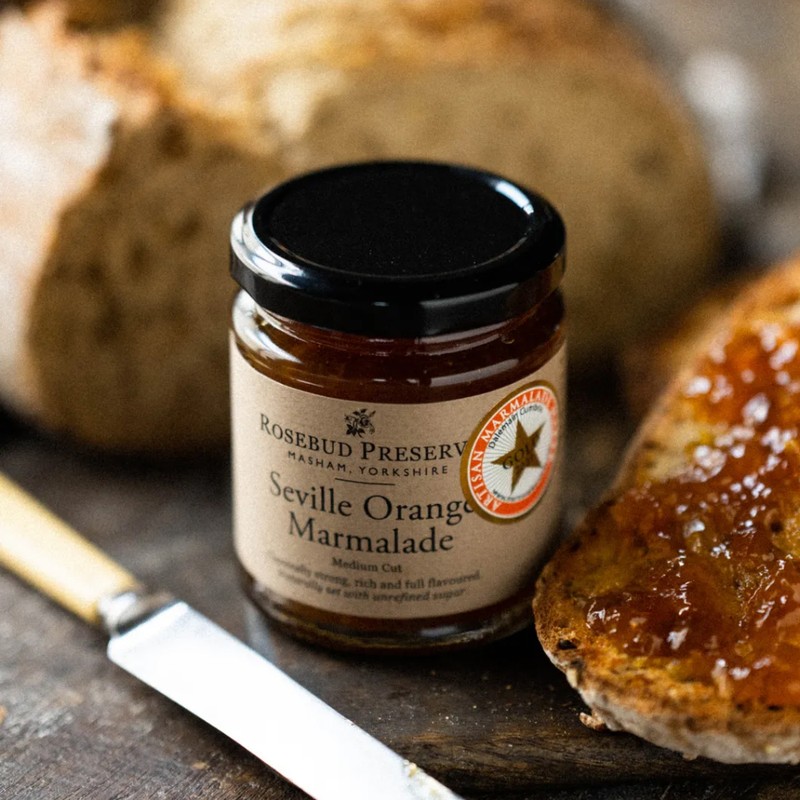
Seville Orange Marmalade: Rosebud Preserves
Wash the oranges and place in a preserving pan with the water. Cover with a lid, bring to the boil and simmer gently for approximately 2 hours 20 minutes or until the orange skins are tender when pierced with a knife.
Remove the fruit from the cooking water with a slotted spoon and set aside in a bowl.
While the oranges are cooling, measure the cooking water and make up to 1.3lt with extra water if necessary or discard some water to achieve this amount.
Return the adjusted cooking water to the pan, add the sugar and stir over a low heat to fully dissolve.
Cut the oranges in two, remove the pips with your fingers or a fork. Cut the peel and flesh into thick, medium, or fine shreds, dependant on choice. Add these and the lemon juice to the sugared cooking water, bring to a rolling boil and cook for approximately 10 minutes.
Take the pan off the heat and test for the setting point – either 104.5ºC using a sugar thermometer or place a very small amount of the marmalade on a cooled saucer (put one in the fridge when the fruit is cooking). Allow to cool and push gently with a finger; if the surface of marmalade crinkles, setting point has been reached. If not, return to the heat for two minutes and then test again, removing the pan from the heat on each occasion.
Once setting point is reached, stir gently and skim with a slotted spoon to remove any scum that has formed, then leave to stand for 10 minutes for the marmalade to thicken.
Stir gently once again to distribute the peel evenly and, using a measuring jug, pour into warmed jars, lid immediately and label once cool. Store in a cool dark place. This marmalade will keep well for 18 months and is at its best eaten within six weeks once opened.
Visit RosebudPreserves.co.uk
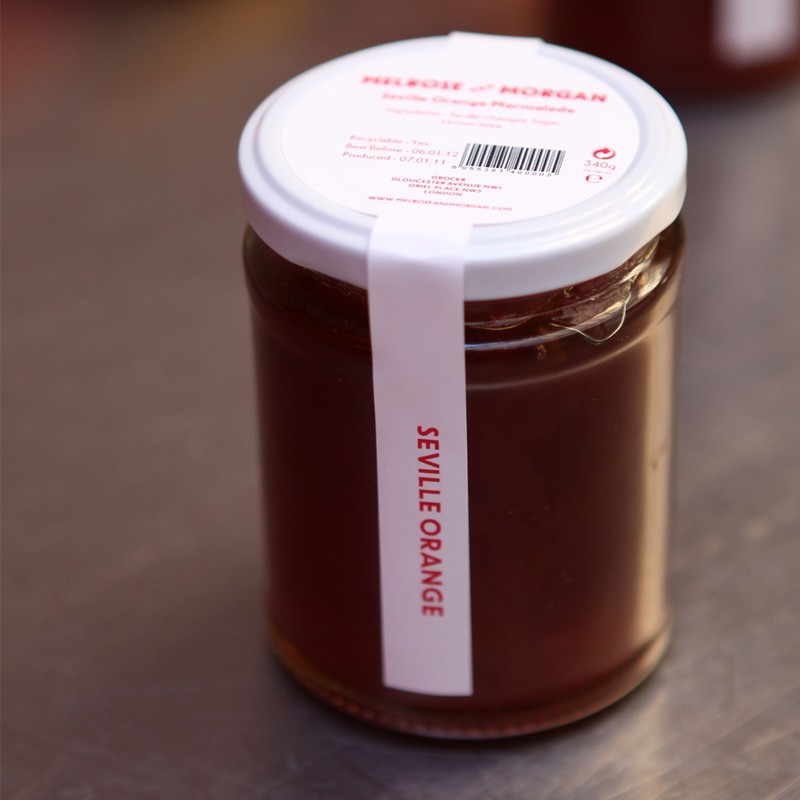
Seville Orange Marmalade: Melrose & Morgan
Sterilise the jars. Set aside until ready to pot the marmalade. Wash the fruit thoroughly. Place a plate in the freezer.
Place the whole oranges in your largest pan with two litres of water. Bring to the boil very gently, partially cover, then cook for two hours, until completely soft when pierced with a knife. Allow to cool.
You should have about 1 litre of liquid left. Cut the oranges in half, scoop out the flesh and push it through a sieve. Add to the poaching liquid. Set over a medium heat, add the sugar and lemon juice and heat to dissolve.
Slice the skins neatly and add them to the pan. Increase the heat to a setting point of 104.5°C. Stir once or twice, but not too much as stirring cools the pot.
Spoon a bit on to the chilled plate and see if it wrinkles when you push a finger through. If not, return to the heat with 50ml more lemon juice for 10 minutes. Repeat until it sets.
Cool for 10 minutes to allow the peel to distribute, then pot into hot jars using a jug or funnel. Seal. Label and eat within 18 months.
Visit MelroseAndMorgan.com
Made your marmalade? Why not try one of these six recipes that use it as a key ingredient...
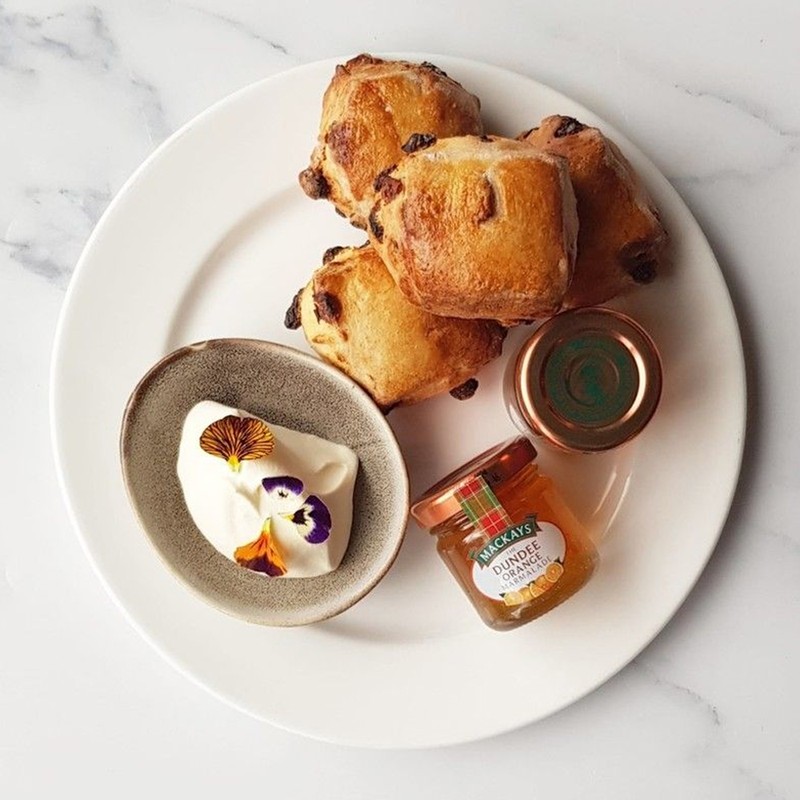
Scones With Marmalade: Tatha Bar & Kitchen at V&A Dundee
Turn the oven to approximately 220ºC/180ºC Fan/Gas Mark 6-7.
Sift flour and baking powder into a bowl. Slice the butter thinly or grate into the bowl and rub the butter into the flour with your fingers. Add milk gradually and use a fork to bring the mixture together.
Tip onto a floured mat or benchtop. Use your fingertips to bring together more and then flatten out. Cut into even triangles or squares, or use a cookie cutter.
You can brush with milk or egg on the top if you like (but not necessary). Bake in the middle of the oven for approximately 10-15 minutes, depending on the heat of your oven. I usually do mine for around 12 minutes. Check the bottom of one is slightly browned which will tell you they're ready.
Place on a wire rack to cool. Store in an airtight container or wrap in a tea towel to keep them soft. Serve with homemade marmalade.
Visit VAM.ac.uk

Marmalade Roast Vegetables: Bonne Maman
Preheat the oven to 180°C/160ºC Fan/Gas Mark 4.
Place the prepared vegetables, garlic bulb and herbs in a roasting tray. Drizzle with the olive oil and roast in the preheated oven for 30 minutes.
Remove from the oven, spoon over the marmalade and honey, mix well with two spoons, then season well with salt and pepper.
Put back in the oven for another 10 minutes, then squeeze out the soft garlic, discard the shell, and stir to coat. Serve immediately with any roast meats.
Visit BonneMaman.co.uk
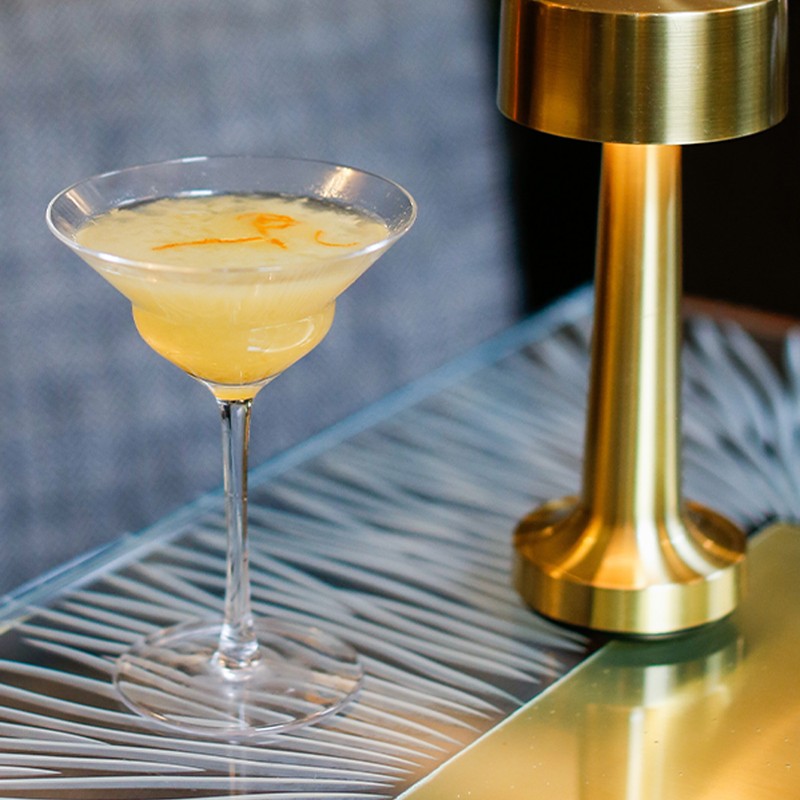
Breakfast Martini: Brown’s Hotel
Pour all the ingredients into a shaker filled with ice.
Shake and strain into a chilled cocktail glass.
Shred some orange peel on the top of the drink as garnish.
Visit RoccoForteHotels.com
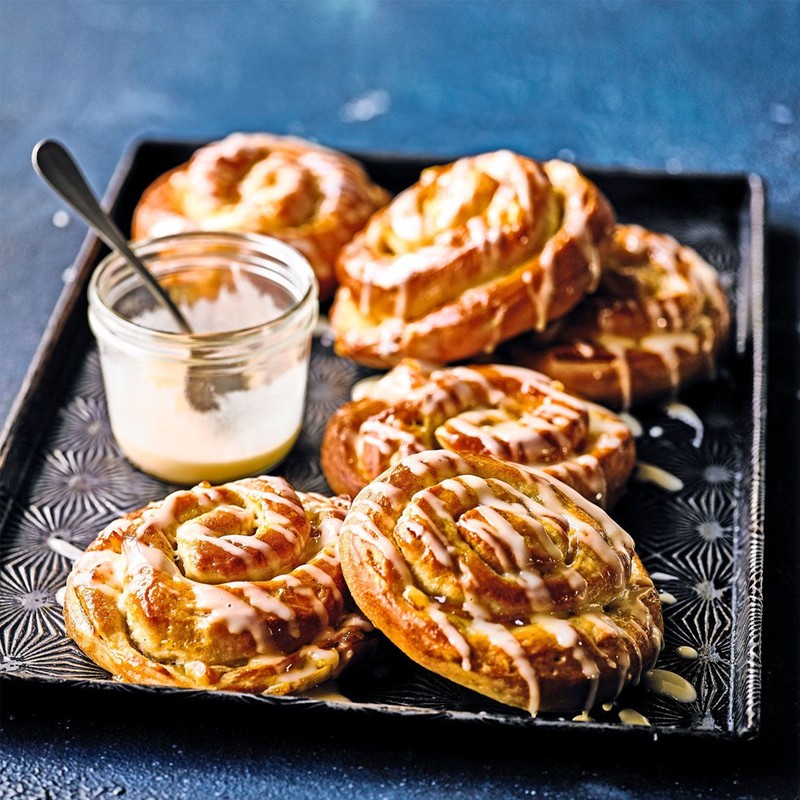
Spiced Clementine Breakfast Buns: Waitrose
Put the butter into a small saucepan with the milk and 100ml of water. Warm over a low heat until the butter has melted. Set aside to cool for a few minutes.
Put the flour in a large bowl (or the bowl of a freestanding mixer). Add the yeast to one side of the bowl and the salt, sugar and spice to the other.
Beat the eggs into the lukewarm milk mixture, then gradually add this to the dry mixture, stirring all the time, until a sticky dough forms. Knead on a lightly oiled surface (or using the dough hook attachment) for 10-15 minutes or until it is no longer sticky and has become a smooth, elastic dough. Towards the end of the knead, sprinkle over the zest, mixed peel and apricots and fold in. Put the dough in an oiled bowl, cover, and leave in a warm place for 1-2 hours, until doubled in size.
When the dough has risen, turn it out onto the oiled surface and fold it in on itself a couple of times to knock out any large air bubbles. Roll the dough out into a large rectangle, approx 40 x 20cm (around twice as long as it is wide). Spread the soft butter all over the dough, then top with the 3 tbsp of marmalade. Tightly roll the dough, starting from one of the shorter sides, then cut into 10 slices and put on a baking tray with enough space for them in a single layer to double in size. Cover the rolls with oiled clingfilm and leave for at least 45 minutes, or until doubled in size (you can also put the buns in the fridge overnight at this stage, to bake fresh for breakfast).
Preheat the oven to 200ºC/180°C Fan/Gas Mark 6. Brush the risen rolls with beaten egg and bake for 15-20 minutes or until golden. Remove from the oven and immediately brush with the 1 tbsp of marmalade. Mix together the icing sugar with enough clementine juice to make a thick icing. Drizzle or pipe over the tops of the buns, then serve warm. These buns will keep for two days but are best enjoyed on the day they are baked.
Visit Waitrose.com

Marmalade Loaf: Paulene Enigboken, Dualit
Leave aside 1 tbsp of marmalade.
Line a loaf tin with greaseproof paper.
Mix the marmalade, butter, sugar, eggs, flour, baking powder and spices for approximately 2 minutes until smooth.
Stir in about 75g of nuts.
Pour into the loaf tin, smooth and sprinkle over the remaining nuts.
Bake at 180ºC/160ºC Fan/Gas Mark 4 for 1 hour-1hour 15 minutes (cover very loosely with foil after 45 minutes).
Once cooked remove from the tin.
Heat the remaining marmalade until it resembles a smooth, thick liquid and spread over the warm loaf.
Visit Dualit.com
DISCLAIMER: We endeavour to always credit the correct original source of every image we use. If you think a credit may be incorrect, please contact us at info@sheerluxe.com.

